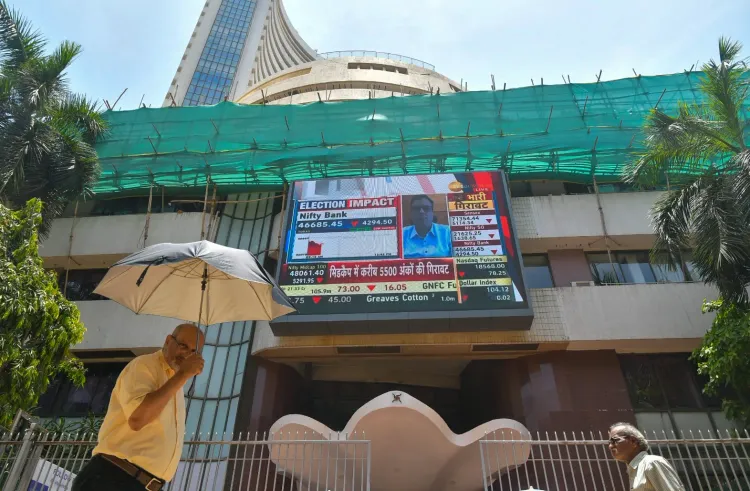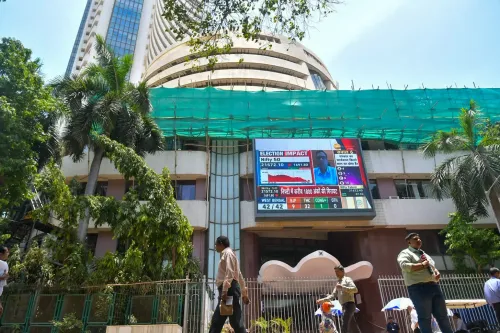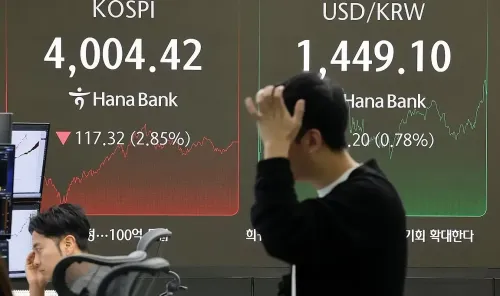Why Did the Indian Stock Market Close Lower Amid IT and Banking Sell-Offs?

Synopsis
Key Takeaways
- Indian stock market closed lower due to IT and banking sell-offs.
- Sensex ended at 82,259.24, down 375.24 points.
- Nifty settled at 25,111.45, down 100.60 points.
- 19 Nifty stocks advanced, while 31 declined.
- Sectoral indices showed a downward trend.
Mumbai, July 17 (NationPress) The Indian stock market concluded the day in the red on Thursday due to substantial selling in IT and banking shares, influenced by Q1 earnings reports and FII outflows spurred by trade deal uncertainties.
The Sensex wrapped up at 82,259.24, registering a decline of 375.24 points or 0.45 percent from the previous day's close of 82,634.48. While the 30-share index opened slightly higher at 82,753.53, it quickly fell into negative territory, primarily due to sell-offs in major IT and banking stocks such as TCS, Infosys, and HDFC Bank. The index recorded an intraday low of 82,219.27.
The Nifty settled at 25,111.45, down 100.60 points or 0.40 percent.
“Indian equity benchmarks experienced a minor downturn as investors adopted a cautious approach amid weak Q1 earnings, especially in the technology and banking sectors,” stated Vinod Nair, Head of Research at Geojit Investments Ltd.
Market participants remained on the sidelines due to elevated valuations in large-cap stocks and foreign institutional investor outflows. Nevertheless, any positive news could potentially enhance market sentiment, he added.
Tech Mahindra, HCL Tech, Infosys, Eternal, TCS, Axis Bank, Bajaj FinServ, and HDFC were among the top losers within the Sensex group. In contrast, Tata Steel, Trent, Tata Motors, and Titan posted gains.
On the Nifty50, 19 stocks advanced while 31 saw declines.
Every broader index closed in the negative. Nifty Next 50 dropped 159.10 points, Nifty Midcap 100 fell by 100 points, and Nifty Smallcap 100 ended the day 22.75 points lower.
Sector-wise, indices also fell. Nifty IT plunged 522 points, Nifty Bank decreased by 230 points, while Nifty Fin Services dropped 106 points. Conversely, Nifty FMCG showed positive movement.
The rupee weakened by 0.12 percent, trading at 86.02, as the dollar index found support around the 98.70 mark. The downturn in domestic capital markets further impacted the rupee.
“The Nifty remained largely under selling pressure throughout the day as it struggled to surpass the key resistance level of 25,260, leading to long unwinding. The hourly chart suggests a consolidation breakout, indicating waning bullish momentum,” explained Rupak De from LKP Securities.
The prevailing sentiment appears bearish, potentially dragging the Nifty towards the 24,920–24,900 range in the near term. On the upside, 25,260 is expected to serve as significant resistance, analysts noted.










